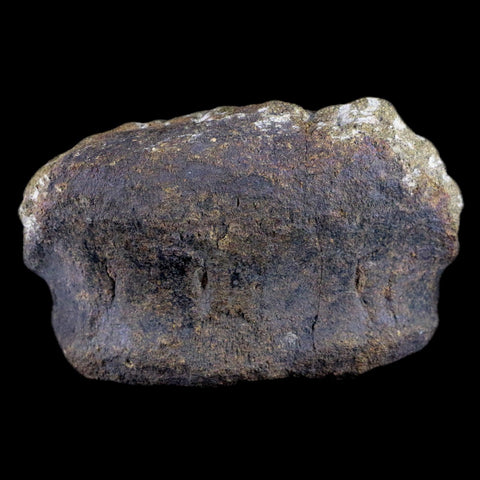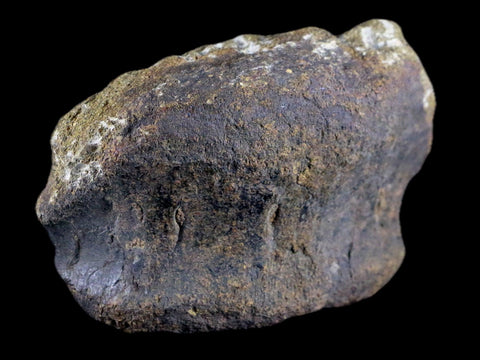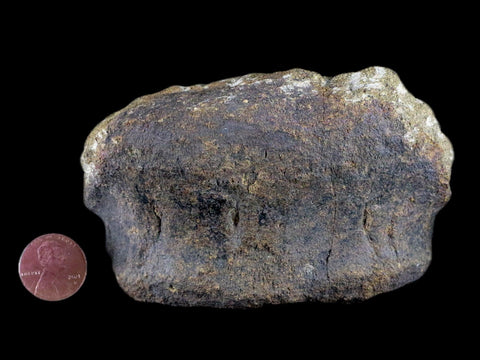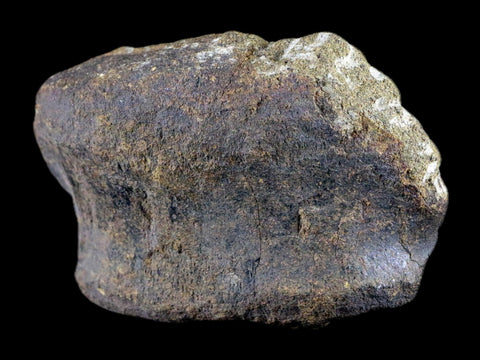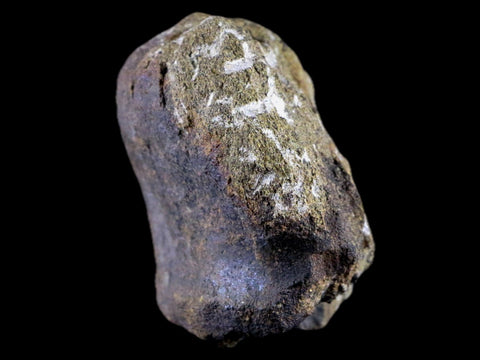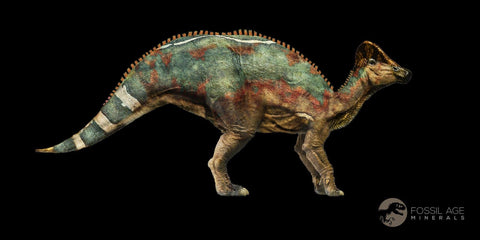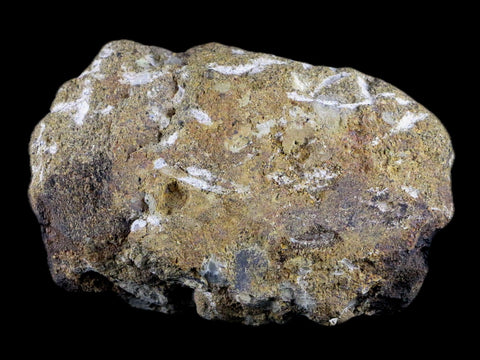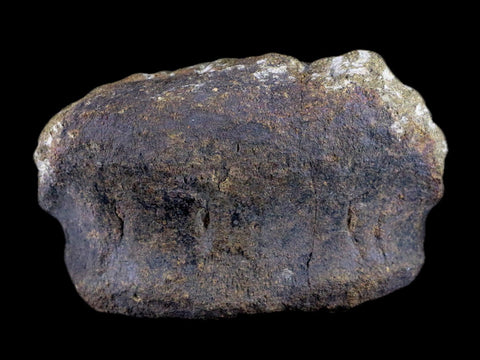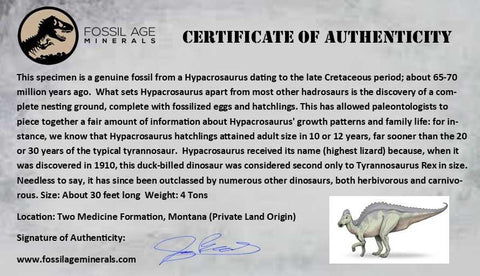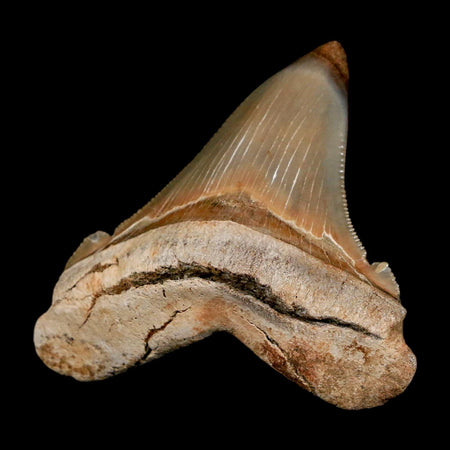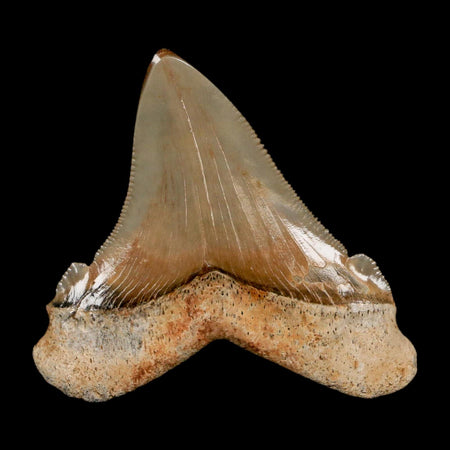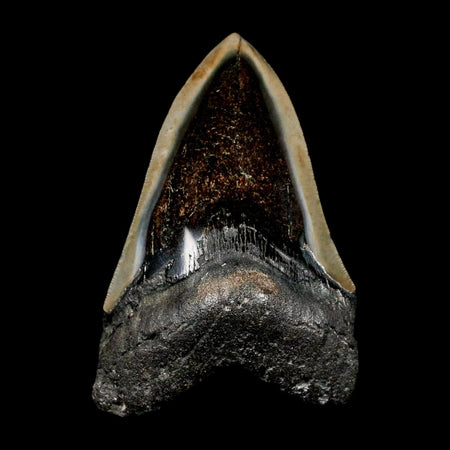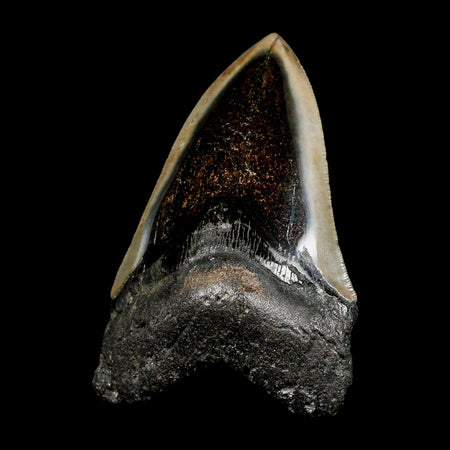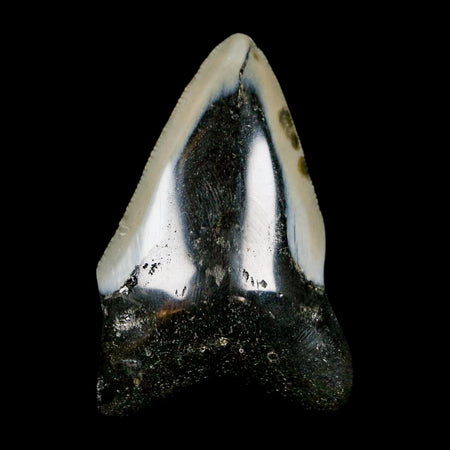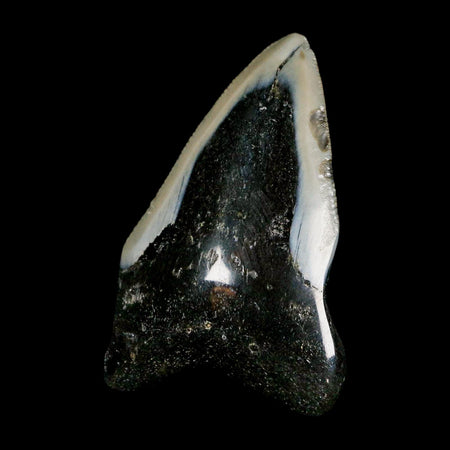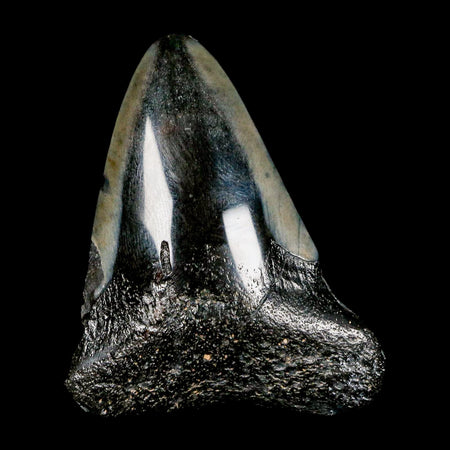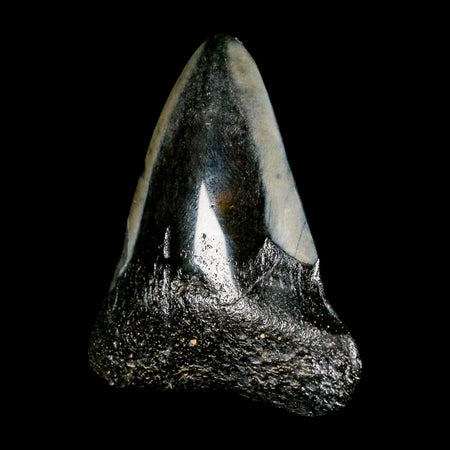4" Hypacrosaurus Dinosaur Fossil Vertebrae Bone Two Medicine FM Montana COA
Location: Two Medicine Formation, Montana (Private Land Origin)
Weight: 13.9 Ounces
Dimensions: 4 Inches Long, 2.6 Inches Wide, 1.7 Inches Thick
Comes with a Certificate of Authenticity.
The item pictured is the one you will receive.
This is a real fossil.
Hypacrosaurus Dinosaur
The name Hypacrosaurus means ‘near the highest lizard,’ referring here to the dinosaur Tyrannosaurus, one of the largest predators of late Cretaceous North America. While a large Tyrannosaurus could reach about twelve meters, Hypacrosaurus grew up to nine meters, making it roughly a third smaller. Evidence suggests Hypacrosaurus, along with similar dinosaurs, was likely prey for Tyrannosaurus and related species like Albertosaurus. A notable example is a large bite wound on an Edmontosaurus matching a Tyrannosaurus jaw, which healed over time—indicating the attack occurred while the animal was alive, not as scavenging afterward.
Each Hypacrosaurus nest contained about twenty eggs, suggesting they reproduced at a pace that balanced the high chances of offspring loss. If we consider stable environmental conditions, this likely indicates Hypacrosaurus was a common prey animal. Beyond the threat from tyrannosaurs, smaller predators like troodontids, including Troodon, posed significant risks to the younger dinosaurs, limiting how many reached adulthood. This perspective helps us appreciate the challenges Hypacrosaurus faced in its natural habitat.
The crest of Hypacrosaurus is similar to that of its relative Corythosaurus, though wider and not as high. This crest was also hollow, which confirms its establishment as a lambeosaurine hadrosaurid (the group typified by Lambeosaurus). Several theories have been made about the function of lambeosaurine head crests, though the one with the most support concerns visual display so that different species of hadrosaur can tell each other apart, probably in a similar fashion to how the differences in the forms of horns and neck frills allow different genera of ceratopsian dinosaurs to be identified.



